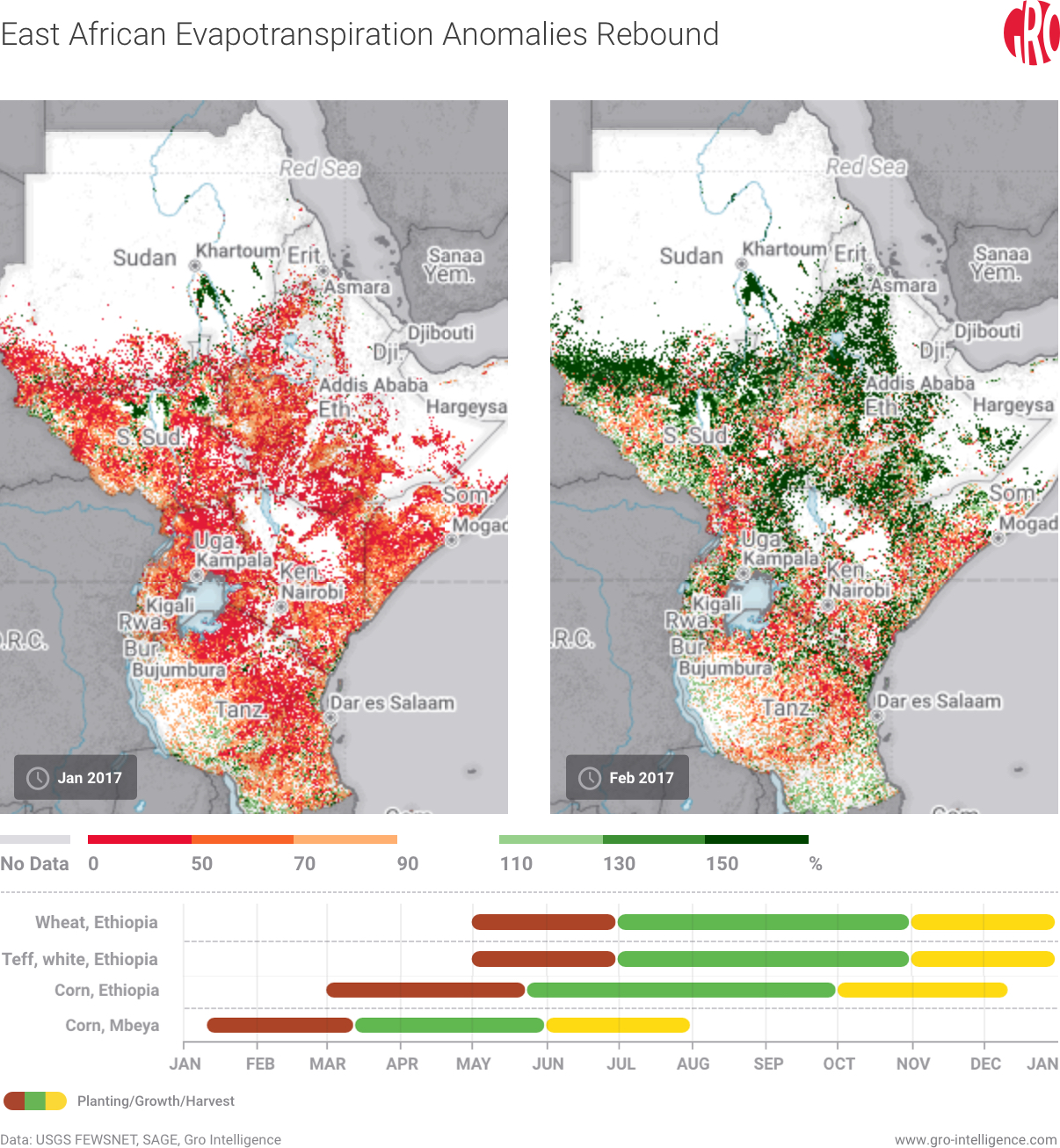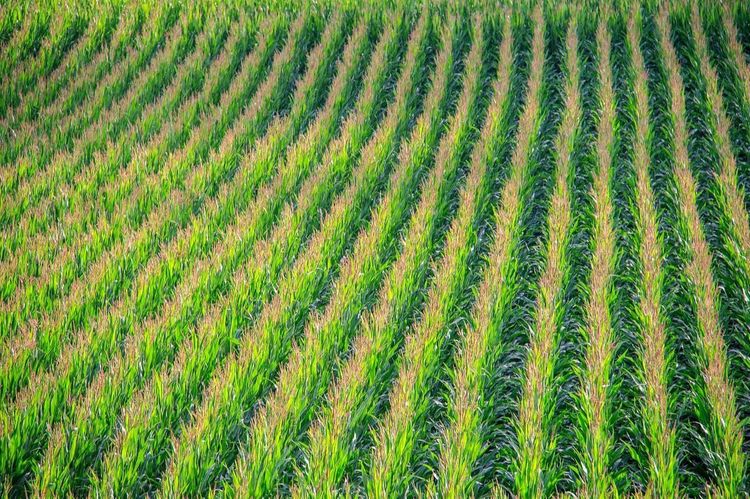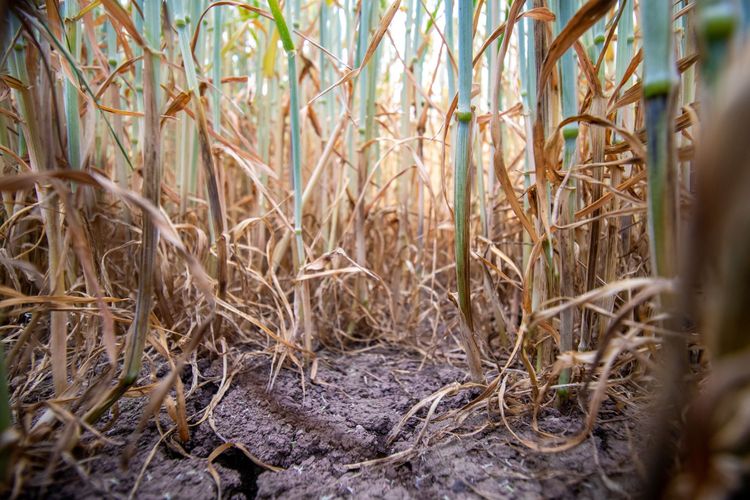Drought Status in India and East Africa
Recent dry spells in India and East Africa have led to concern for the crops. We at Gro Intelligence have assembled an update on the changing situation.
INDIA
Drought Still Plagues Southern Indian States:
The drought in India persists. Indian agriculture relies on monsoon rains, which typically start to fall mid-year over the southern region. Rainfall levels last year were far lower than normal, thus limiting the availability of water in southern Indian states. In particular, Karnataka, Kerala, and Tamil Nadu were severely impacted.
Evapotranspiration anomalies (ETa) can provide an early crop health indicator. Evapotranspiration measures the total amount of water that evaporates from soil and water bodies and transpires from plants. Anomalies show the deviation from historical seasonal values. Despite ETa graphs that indicated a severe lack of healthy soil evaporation and plant transpiration activity late last year, the Tamil Nadu government did not declare the state to be drought-affected until January 2017. Farmers protested the belated declaration by holding dead rats in their mouths (natch) and reported farmer suicides in the region increased.
As of February 2017, soil moisture conditions in the southern states still showed heavy distress. The main winter rice crop has already been harvested in the region. The currently growing summer rice crop accounts for a smaller fraction of India’s rice production. Nevertheless, the prolonged period of dryness is concerning in a country that needs every calorie for its enormous population.

EAST AFRICA
East Africa Receives Much-Needed Rain:
On the opposite side of the Arabian Sea, rainfall during the month of February has largely addressed the incipient drought conditions in the region. Up-to-date evapotranspiration anomaly data on Gro, which can provide an early crop health indicator, show a vastly improved moisture situation across the area. Earlier fears for poor harvests due to drought should be alleviated by the recent weather, but the chain of events those fears set in motion (higher prices, tighter supplies) give rise to a persistent need for the UN intervention that is underway. Regionally depleted stocks from the past few years of dry weather add to the tension. Most Tanzanians currently report missing meals, and suffering continues to worsen in South Sudan and Somalia. Still, the region will benefit from the recent rainfall in the ongoing growing season and the season to come.

The drought brings less cause for worry in Ethiopia, given that the country’s planting and growing seasons for staple crops start later in the year. However, soil conditions for key growing regions in Tanzania, such as Mbeya, still showed signs of distress after another month of low rainfall. Since plantings for major crops are already underway in the region, the drought will likely have adverse effects on Tanzanian food supplies.

 Blog
BlogSouth America: Fall Planting Snapshot
 Insight
InsightTexas Cotton Prospects Wither as Extreme Heat Continues
 Insight
InsightMorocco’s Drought-Imperiled Wheat Crop Points to Untimely Import Pressure
 Insight
Insight

 Search
Search